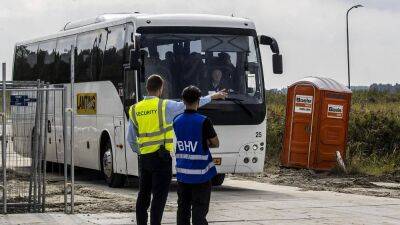70-hour weeks, taking selfies for Ice: life as a migrant trucker in California
After spending a night in late September driving an 18-wheeler across the country, Gurpreet Singh woke up to see his phone lit up with notifications from US Immigration and Customs Enforcement. Immediately, Singh called back to acknowledge the contact attempts. Then he snapped a selfie to upload into the mobile app immigration officials used to track his whereabouts.
Earlier that morning, worn out from a nonstop 11-hour trip that started in Bakersfield, California, Singh, a Punjabi immigrant awaiting asylum, had gotten the time zones confused. When the notification he expected didn’t arrive, he simply submitted an unprompted selfie and fell into a deep sleep. As his co-driver continued the journey from St Louis to Chicago, the first notification arrived, followed by a flood of others, including missed calls from a cousin whom Ice had contacted while searching for him.
Already stressed about delivering his load on time, Singh now grappled with the fear that this mistake could hurt his immigration case.
Four years ago, Singh left his village in Punjab, India, flew to Mexico and crossed the US border, where he was immediately apprehended, detained for five months, and released on bond to await an asylum hearing. After six months, he applied for a temporary work permit and soon began working as a truck driver, hauling fruits, vegetables and meat back and forth between his home in Bakersfield, California, and various east coast destinations.
Two years ago, however, an immigration judge denied his asylum case and issued a deportation order. Singh filed an appeal and was granted another hearing, scheduled for next year.
In the meantime, Ice continues to surveil Singh through various means, from automated phone calls to in-person
Read more on theguardian.com






















